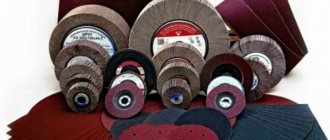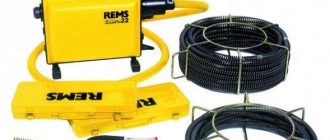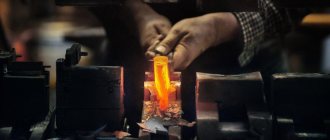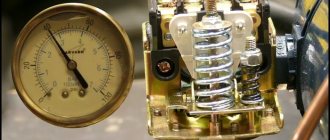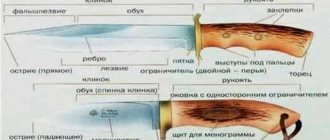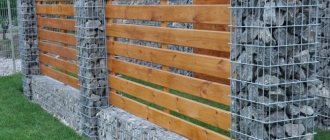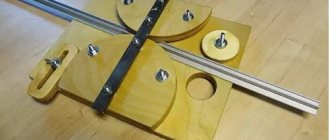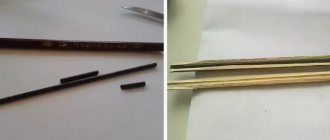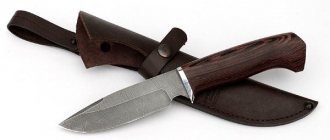Making a forged knife
In addition to professional tools, you can also use improvised means for forging if they seem convenient. In order to forge a knife, you will need:
Tools for hand forging.
- big hammer;
- small hammer;
- blacksmith's tongs;
- pliers;
- adjustable wrench;
- vice;
- anvil;
- Bulgarian;
- welding machine;
- grinder;
- grinding machine;
- sandpaper;
- file;
- coal;
- bake.
It should be remembered that ordinary hearths (especially fires) will not provide the temperature necessary for forging steel. To do this, the workpieces will have to be heated for too long, which can lead to deformation and burnout of the material. The furnace must be made of thick-walled metal, and a pipe must be connected to it, through which a constant supply of air will be established. The air can be supplied by an old vacuum cleaner or a fan. The fuel must be chosen taking into account the fact that it should burn for a long time and not go out from the air flow, so coal is a good choice.
How to make emery with your own hands - more details>>>
Preparing tools
Forging a knife is performed using certain blacksmithing tools, which you can purchase without any problems in a specialized store. However, you can try to forge a knife with your own hands and using a non-professional tool. You will need:
The forging hammer should weigh 3-4 kg
- hammer weighing up to 1 kg;
- hammer weighing 3-4 kg;
- welding machine;
- vice;
- grinder;
- Bulgarian;
- blacksmith tongs (can be replaced with ordinary pliers, always without insulation on the handles);
- anvil (you can use a homemade analogue of this device from an I-beam);
- adjustable wrench;
- bake.
If with simple tools everything is quite clear, then about the stove you need to give separate explanations. To forge a knife, the steel must be heated to a temperature of 900 degrees. This is almost impossible to do in a simple hearth. Therefore, the hearth needs to be modernized a little. If you have never had to harden steel before, you will have to assemble a stove from thick-walled metal from scratch and connect an air supply pipe to it. The air can be supplied by an old vacuum cleaner or a fan. This design is perfect for heating workpieces up to 900-1200 degrees. The stove can be heated with ordinary charcoal. The best one is the one that burns as long as possible and produces the maximum amount of heat.
Choosing steel for a knife
For a high-quality knife, you need to choose the right metal and process it.
Strength characteristics and cutting qualities depend on the selected metal. In order to choose the right metal, you need to know what characteristics it has. The main properties of steel are strength, hardness, wear resistance, toughness and red resistance.
Hardness measures the steel's ability to resist penetration by harder material. Hard types of steel from which homemade knives are made can successfully resist deformation. There is a Rockwell scale for measuring hardness: steel should have values from 20 to 67 HRC.
Wear resistance - resistance to wear during operation of the material. This indicator directly depends on the hardness of the steel.
Strength is usually tested by bending or strong impacts. It is characterized by the ability to maintain integrity under the influence of external forces.
Plasticity is the ability to absorb and dissipate the kinetic energy of an impact without collapsing or deforming.
In order to properly forge a knife, you need a sketch.
Red fastness - resistance to high temperatures. If the homemade product remains with the same strength characteristics during heating and after it, this indicates that the material has red resistance. This indicator determines at what temperature steel can be forged. Hard grades of steel are the most red-resistant; their forging temperature is around 900° C. The melting point for such steels ranges from 1450 to 1520° C.
All properties have become interconnected and must be combined with each other, since an increase in one indicator necessarily leads to a deterioration in another. The properties of steel depend on the silicon, carbon, tungsten, cobalt, nickel and molybdenum it contains, as well as other alloying elements and additives. In order to find out exactly what steel composition is present in a particular item from which you plan to make a homemade knife, you need to have a complete grade of steel and alloys on hand. It provides detailed steel compositions and their characteristics.
Sketch for knife design
Types of knife blades.
A knife can be considered a simple object, since it consists of a handle and a blade. But to make a high-quality knife, a number of parameters must nevertheless be observed, since the functionality of the tool depends on them. Experienced craftsmen can do without blanks and preliminary sketches, but for a beginner it is important to create an initial template.
The shape and dimensions of the template depend on how you plan to use the finished knife. Complex shapes will require a file and a lot of work to straighten and smooth out each planned protrusion. Hunting knives have simple shapes, while designer products are complex to manufacture, but non-functional. Beginners can be advised to start with small pocket knives (they are also called mushroom knives). It should also be remembered that knives can, based on the results of an examination, be recognized as edged weapons, the possession and manufacture of which requires a license. Taking this into account, it is advisable to make do with the production of small samples.
The drawing is made on thick paper; it is recommended to make both the entire image and the handle and blade with the shank separately. The model is cut out to be held in front of your eyes or placed on the blade before using a file for sharpening.
Meat knives
A very popular group of knives. Meat is a rather specific product in processing. It contains bones, skin, connective tissue, and veins. To cut it efficiently, different knives are used: a hatchet, a chopping knife, a fillet knife, and for cutting meat from the bone. This is a standard set for home cooking.
Sirloin
It has a thin, long (20–30 cm) and very flexible blade. Designed for separating meat and fish fillets from bones and skin. Thanks to its flexibility, the knife seems to glide over the bones, without leaving a single gram of pulp on them. It’s also very convenient to use a fillet knife to remove membranes from meat and offal.
For cutting meat from bones
The purpose of the knife is clear from its very name. It is also called a boning knife. Boning is the preparation of meat for sale:
- separation from bone;
- vein removal;
- removal of connective tissue.
The blade of the knife is thin, but relatively strong. The cutting edge line is located on the axis of rotation of the knife, making the tool easy to control. As soon as you turn the brush, the knife will take the desired angle, remaining in place. It easily goes around the bones, but does not bend as much as sirloin.
Cutting
Another boning knife. It is distinguished by its relatively large size - 20–26 cm and a durable blade. A carving knife is an all-rounder among meat tools. Thanks to the double-edged end of the blade, it has excellent penetrating properties. It can be used for different purposes:
- separate meat from bones and cartilage;
- remove cores;
- cut the meat into portions.
Hatchet
Hatchets are used for cutting meat that contains bones. The instrument is distinguished by a massive, thick blade. Moreover, its sharpness is less important than the weight and thickness of the blade. A heavy hatchet with a moderate blade sharpness will cut meat faster and better than a small and sharp one.
It is important to note that they do not cut with a hatchet, but work only in depth
How to forge a knife from a drill?
Knives can be made from drills or wrenches.
Many drills use alloy steel, which makes them popular for forging various types of knives. This type of steel is wear-resistant, durable and easy to sharpen; a file will help correct minor imperfections. When choosing a drill for forging, you need to remember that large drills made of alloy steel only have a tip, and the shank is made of ordinary steel. Before forging, be sure to check what kind of steel it is and remember the boundaries. Determining the boundaries can be done using a file or drill, grinding along the entire length with a special machine. When turning, sparks from ordinary steel come out in a large sheaf and have a yellow-orange color. On alloy steel there are much fewer sparks, and their shade is closer to the red spectrum. This procedure helps determine which part of the drill to make the blade from and which to make the shank from.
Read also: Wood carving material for beginners
A fire is lit in the oven. When it flares up, turn on the blower and wait for the coals to flare up at a sufficient temperature. Then the drill must be placed in the fire. This procedure is performed using pliers. The drill is positioned in such a way that there is a blank for the blade in the fire, and the shank serves as a handle.
The metal, heated to the required temperature, is removed from the fire and beaten to the desired thickness.
It is difficult to determine whether the metal has heated up sufficiently without appropriate experience. An error can damage the drill. Before forging a knife from a drill, you can practice on rebar, memorizing the color of the metal that is best for forged. But if the work is done on a sunny day, the color of the metal will not help, since the metal will remain dark in appearance.
The drill, heated to the required temperature, is immediately removed from the furnace, and the bottom of the shank is clamped in a vice. Using an adjustable wrench, firmly clamp the top of the drill and straighten it, unwinding it in a circular motion counterclockwise. This must be done as quickly as possible so that the metal does not have time to cool. A drill that begins to cool will easily break. Unwinding may not work the first time; in this case, the drill is again placed in the crucible, and the operation is repeated the required number of times. An untwisted drill looks like a strip of metal with relatively smooth edges.
The following operations are performed with a hammer, rolling out the metal of the drill to the required thickness. The hot iron is struck with a heavy hammer until its thickness is 4-5 mm. The color of the workpiece must be continuously monitored during the process, and as soon as the metal has turned cherry, it is returned to the furnace. Excessive heat can create scale, which can be easily removed with a file. A workpiece that is not hot enough can easily be broken with a hammer blow.
After the knife is forged, it is sharpened on a whetstone or machine.
Working with the blade is the most difficult part of forging. Curving an edge while maintaining thickness can be considered jewelry work that requires experience and dexterity. The blows must be directed so that the tip is rounded, stretching out strongly, but very carefully. At the same time, you need to ensure that the blade remains smooth and straight.
An equally difficult step is to forge the cutting edge. Take a light hammer (if possible with a rounded head). Start by striking from the middle of the blade to gently drive the metal down towards the cutting edge. The blows must be applied, calculating your strength, not forgetting to monitor the color of the workpiece.
The shank is forged next to the blade and point. There is much less work with it than with a blade and point. The shank, which has a round shape in drills, becomes hot and is flattened with strong blows of a large hammer. The knife handle is designed according to the sketch and can have different shapes, thicknesses and widths.
When forging is complete, the metal must cool. After this, they begin to refine and polish.
All production stages are very important, as they prevent corrosion and improve the cutting properties of the metal.
Here you will need a file and a grinder. All irregularities and sagging must be removed, and therefore a file will most likely not be useful for the work of a novice craftsman. If you need to remove a lot of waste, a grinding machine will handle it faster. Sometimes, to achieve a perfectly smooth and even surface, you have to remove up to 2 mm of steel; the knife becomes much thinner and lighter. Sharpening is performed at the same stage.
The knife is polished with a special felt wheel and a special abrasive is applied to it. The knife is tested by cutting rope and planing timber. Sharpening, if necessary, is adjusted.
Sekach.ru - all about edged and throwing weapons, as well as homemade technologies
- home
- DIY ideas
- What is a knife made of?
A knife can be made from anything
Today, I would like to continue the topic of accessible material from which you can quickly and easily make a knife with good characteristics. Many people are interested in the question of what can be used to make a good knife without resorting to complex technologies. This is written about in some detail in this article. Here we will try to further highlight some of the details of suitable material for knives. The easiest thing is to use old broken stainless steel kitchen knives. Knives should preferably be Soviet-made, and not Chinese consumer goods. From such a fragment you can make a good knife with excellent cutting characteristics.
Also, good knives can be made from high-speed steel, which is used in the production of hacksaw blades for power saws. The disadvantage of this material is that it is quite fragile and tends to rust. But it holds an edge well.
An excellent material is knives for a wood planer. This metal is very well processed and polished. The planing knife is burned red-hot with a blowtorch and then cooled. After annealing, the metal can be easily sawed with a hacksaw, shaped, or sharpened with a file. After the knife is given its final shape, it must be hardened, either in oil or in water. But, unfortunately, knives made of this metal also rust.
The next metal we'll look at is a regular file. It is very easy to make a knife from a file, without any special machines. Take a file, heat it well, again with a blowtorch until red-hot, and let it cool. After this, it is very well processed with another file, sawed with a hacksaw to give it the desired shape. Next, hardening is carried out again in oil or water. The main thing is that in order to get a good knife from this metal, you need proper heat treatment. There is no need to unforge this metal. We simply burn, sharpen, file, remove excess metal with a hand tool or sandpaper. And we get a pretty good knife.
Read also: Homemade feather removal machines video
You can also make a budget knife from an ordinary hacksaw for wood. It is also very easy to process, very elastic steel. It can be adapted, for example, to make a kitchen knife that will cut well and hold an edge well.
Car springs are also good for making knives. The only bad thing about a spring is that it needs to be unchained and properly heat treated. This is quite a time-consuming task. But if you build a homemade forge on your property, you can make a good knife from a piece of spring. Or just take it to the blacksmith, who will forge anything for you for a bottle of vodka. You can make a knife from a car valve. It also makes good stainless steel. The valve is heated to high temperature and hammered on an anvil. Then you need to shape the blade and harden it.
Very good knives are made from large drills. Clamp the drill in a vice, heat it until soft, take the gas keys and begin to slowly unscrew it. After this, you heat it up again and begin to unforge the resulting part, giving it the desired shape. The drill will not be sharpened with a file. All work on shaping the blade must be done on sandpaper.
The knife can be made of spring steel. There is no need to anneal this metal. You can immediately make a knife blade from the workpiece. This steel cannot be drilled with a regular drill. It is necessary to use a pobedit drill.
Now let's talk about rust, which is present in most metals. If you want to prevent your knife from rusting, you can treat it with sulfuric acid or phosphoric acid.
The article uses material from a video on YouTube
In modern households, a knife is used to perform various tasks - from cooking to cutting out various figures. What to do if all purchased knives do not meet the requirements and do not meet the declared characteristics? In this case, you will have to make a knife with your own hands.
How to choose a knife?
One way or another, choosing the right material is the starting point when purchasing a knife, or any other tool. After all, if the quality of the alloy is unsuitable, then any modification of the device will be pointless. It's like using a can opener out of plastic or making tires out of wood. Suitable material plays a major role in assessing the quality of a product.
Suffice it to recall inexpensive Chinese multitools, which have excellent ergonomics, but do not perform even half of their functions. The knife is not even suitable for sharpening a pencil, and the pliers bend when trying to grab a nail. But, unfortunately, price is not the most important criterion here. For example, a good knife made of spring steel can be quite inexpensive but have excellent characteristics.
I advise you to look primarily at reviews and inspect test units when possible. Supermarkets sometimes have open packages. Bad material is easy to spot immediately. Most often, Chinese plastic steel is visible to the naked eye. A favorite trick of counterfeiters is to make a soft metal blade and paint it with silver. This is easy to notice if you pay attention to the sharpening strip. This stripe should not be too dark and should look uniform in relation to the entire blade material.
The blade can be bent in your hands. If it bends easily and does not spring back, then this is not a suitable sample. For comparison, you can always keep a real Swiss Army knife in your pocket.
Good luck in your choice and remember the main thing - if you buy a multitool/knife made of a low-quality alloy, your money will simply be thrown away.
Advantages of handmade
On sale you can find a variety of knife models that differ in price, quality and shape. Seeing such a choice, you can simply get confused. It is possible to find a suitable model, but, as a rule, it will not satisfy all the requirements and expectations of the buyer. If the desired model has not been found, and there is no desire to make a knife with your own hands, then you can always turn to a blacksmith. It is worth remembering that the manual work of such a specialist is very expensive. Making a knife with your own hands from start to finish is not only profitable, but also an exciting activity.
What you can achieve by making a blade yourself:
- Choose the type and beautiful shape you want, even in the shape of a key.
- Implement all your requirements for properties and characteristics in one tool.
- Choose the most suitable hardware.
- Using heat treatment, namely tempering and hardening, achieve the desired ratio of elasticity and hardness.
- Choose a design that will please you for a long time.
- Avoid mistakes that are present in purchased products, which can ruin the overall impression of the work.
As you can see, making a knife yourself is the most suitable solution. In your work, you can implement any ideas, from the selection of material for the handle to the type of steel, shape and stain with which the handle will be coated.
Preparing all the details
At this stage, you need to make a hole and cut threads where the screws will be installed in the handle. You also need to warm up the holding lever and bend it to fit it into the handle.
Since ejection of the blade is ensured by a spring, we wind it around the axis of rotation of the blade - after this, it is necessary to cut out a seat for the spring in the PCB on the inside of the handle.
To do this you will need a drilling machine. We attach the spring itself to the blade with one end, and to the handle with the other, having previously drilled holes.
We weld a bolt to the trigger lever - this is the same “handle” that will activate the rotation of the blade. Cut off the excess part of the bolt. Next, you need to install the resulting “handle” into the handle of the knife - you need to carve a round groove for it.
Another spring in the handle supports the lever—for it, a stop is machined and installed, which we attach to pins or nails. With a simplified version of manufacturing - a folding knife, a trigger mechanism is not needed.
Blade hardening
If the blade is made of N690 steel, then its hardening temperature is 1071 degrees Celsius.
Since few people can boast of having an industrial oven, such an operation can be done with a torch “by eye”.
At this temperature, the steel has a yellow glow. Alternatively, you can use a magnet to determine the desired temperature regime - if the workpiece is not attracted to the magnet, then you can stop heating. Cooling is carried out in mineral/vegetable oil. By the way, in addition to the blade, it is also worth hardening the lever.
Blade hardening.
To stabilize the stresses in the metal, we conduct a tempering process - the temperature is 200-300 degrees Celsius, holding time is 1 hour. A regular home oven is suitable for this operation. We leave the blade to cool in a closed heating chamber.
You can check the quality of the result with a file - there will be no scratches on properly hardened and tempered steel. After this, the blade can be ground, polished and sharpened - seal the finished blade with electrical tape.
Assembly
It is necessary to install springs, a lever and a blade into the handle - we connect the halves of the handle with screws. To make the handle smooth, you can “recess” the screws by pre-drilling grooves for the heads.
After this, the handle can be sanded and polished with a special nozzle - the aluminum surface will look impressive.
It is clear that to assemble a simple folding knife, you do not need to mount a spring. Despite all the convenience of switchblade and folding knives, they have one serious drawback - if dirt gets inside the handle, and therefore the mechanism, the tool may fail.
So switchblades and folding knives made by yourself require careful handling - only in this case will they last a long time.
Previous Making knivesHow to make a knife from stone Next Sharpening knivesHolder for sharpening knives with your own hands
Assortment in stores
What can you find in stores? Among all the finished products, you can indeed find a worthwhile model. But quality always costs a lot of money. The inexpensive assortment presented will include knives that do not have high technical requirements.
Most often you can find a blade:
- With insufficient strength and elasticity, as a result of which the knife breaks at the slightest bend.
- Made from the cheapest steel, which is the least suitable for such a product. This steel does not have sufficient hardness and will not be able to process hard materials properly, which is why the knife will quickly become dull.
- Poor build quality will also play a role. An inexpensive knife will not be durable and will begin to fall apart at the slightest damage.
Such knives can be found in almost any store, and they are inexpensive. But they break down very quickly, then they are simply thrown away and replaced with a new one. This is not very rational, since most often this tool is used while hiking or fishing, and a low-quality knife can easily let the owner down at the most inopportune moment.
In order to choose and buy a knife correctly, you need to have minimal knowledge in the field of materials, namely, to navigate the characteristics of steel and the mechanical properties of the finished blade. It is also very important to study the market.
Types, features and drawings for DIY knives
There are many types of knives with different applications. Its design, shape, material for manufacturing, strength characteristics and much more depend on the scope of application of the blade. Let's consider the main types and sketches of knives for self-production, depending on their purpose.
There are a lot of types of knives, so it’s difficult to choose the right one. PHOTO: popgun.ru
Hunting knives
This is probably the most ancient and sought-after type of bladed weapon. Hunting knives were used to fight wild animals and cut up prey. High demands have always been placed on them:
- ease of use;
- The steel must be high quality, wear-resistant and maintain its sharpness for a long time. The best, albeit expensive, option is Damascus steel or damask steel;
- the handle is made only from durable wood;
- there is no need for a large guard that interferes with cutting the carcass;
- optimal parameters: length and width of the blade - 100-140×30 mm, spine - 3-4 mm, and steel hardness of at least 58 HRC.
All these characteristics must be taken into account when making a hunting knife with your own hands. Hunting blades are often the pride of the owner. They are decorated with thematic scenes, patterns, and the handle is made from the bones of wild animals. Some hunters collect knife collections.
Some hunting knives can be called a work of art PHOTO: rusknife.com
Creating a sketch and drawing is one of the main stages of making a knife. PHOTO: popgun.ru
The simplest drawing with dimensions PHOTO: rusknife.com
Watch a video on how to make a hunting knife with your own hands at home.
Watch this video on YouTube
Kitchen knives
A knife is a must-have item for any kitchen. It is used by both housewives and chefs of famous restaurants. To perform everyday tasks, 3 knives are enough, but there are sets of more than 10 items, each of which is designed for a specific job: cutting vegetables, meat, bread, etc.
For the manufacture of kitchen blades, metal was initially used, which had certain requirements. It must be durable, not oxidize and suitable for home sharpening. Modern knives are now made from ceramic. Such models are highly hard and retain the factory sharpening for a long time, but they are quite fragile and can break if dropped on a ceramic tile or cement surface. The lining of the handle of home kitchen knives is mainly made of plastic, but durable hardwood is also used.
Types of kitchen knives PHOTO: aggweb.ru
A kitchen “troika” from a famous brand is quite expensive PHOTO: img.best-kitchen.ru
DIY kitchen knives PHOTO: i.pinimg.com
Knives for tourism and survival
You can't do without a good knife on a camping trip or fishing. When going into nature, you often have to deal with various problems that a high-quality, properly selected blade can help solve. A good camping knife is:
- the ability to easily chop branches of various thicknesses, cut slings and ropes;
- necessarily a fixed blade;
- wide blade and thick handle;
- the blade should be made of soft stainless steel for ease of sharpening in field conditions;
- The handle is made of plastic, rubberized and ribbed to prevent slipping.
Types of tourist knivesPHOTO: rusknife.com
Survival knives are derived from tourist models. They are additionally equipped with special devices (multi-tools), which should help a person in extreme conditions. However, often due to the pursuit of maximum versatility, the quality of the product suffers.
Knives for survival in extreme conditions PHOTO: outlivetheoutbreak.com
Combat knives
A combat knife is considered to be a knife designed to defeat an enemy in hand-to-hand combat, and is in service in the armies of different countries. In addition to performing the main task, such blades can be used for digging, cutting wire fences, cutting branches, etc. Distinctive features of knives used by the military are:
- double-sided or one-and-a-half sharpening;
- oval cross-section of the handle;
- the length of the entire product is 220-320 mm;
- the tip is in line with the butt of the blade and handle;
- reinforced guard;
- easy to remove with one hand;
- anti-glare coating.
Series of combat knivesPHOTO: unpictures.ru
Purpose and types of knives
Before making it, you need to understand what the knife is for. Based on this, you should make a list of the desired characteristics and parameters that are presented to the finished product.
There are these types of knives:
- Hunting blades are the most beloved and often made by home craftsmen. The highest demands are placed on them, since these blades are intended for cutting prey. That is why it is necessary to choose a steel that will not dull. It is important to take into account the fragility parameter so that the blade does not crumble due to an unexpected impact on the bone. Don’t forget about wear resistance, since there is no way to change the blade while hunting.
- Tourist - they are most often purchased by people who love active recreation. The purpose of this blade is to cut branches and plan wood chips for the fire. It will not be possible to sharpen a blade in nature, so it is very important to choose steel with optimal parameters. It is worth remembering to maintain a balance between hardness and fragility. The blade should not break due to an accidental fall on a hard surface. Very often, such daggers are used instead of an axe, so they need to be made as wide and durable as possible.
- For survival - tactical products on which a person’s life may depend. They are made with special adaptations to help survive in difficult situations. Often, in the pursuit of additional capabilities, they forget about the true purpose of the blade, which often leads to choosing a product made of unsuitable steel and low quality.
- Kitchen knives are also quite popular among home craftsmen. A quality product with a good blade is very expensive. Making a kitchen knife with your own hands at home is not so difficult, but the requirements must be met the same as for hunting models. The blade should also not crumble on the bones and be flexible enough to remove fillets.
Read also: Design and principle of operation of centrifugal pumps
Beginners are often mistaken and think that camping and hunting knives are identical. It is impossible to make a universal blade that will cope with all purposes with equal success. Touring knives are necessary for rough work: cutting branches and brushwood. It will be very difficult to cut up a carcass with them. The hunting knife is very sharp and hard, but it can be broken if used as a camp knife.
What are modern knives made of?
09.29.2015 Modern kitchen knives, of course, have come a long way in terms of manufacturing and sharpening technologies. Many specialized models have appeared, designed for certain operations.
Finally, many knife brands that have been making knives for centuries have managed to achieve incredible results. However, there is one thing that has not changed: the blade materials of most knives have remained virtually the same. However, there are also enough innovations in this area.
Carbon steel
This material still holds a leading position. Physically, it is an iron alloy with a high carbon content (1%). This composition provides the steel with strength and softness, which makes it easy to sharpen and, therefore, the blades will be the sharpest. However, carbon steels in their pure form (that is, the most inexpensive) are quite vulnerable: over time, they are susceptible to corrosion and oxidation as a result of constant contact with moisture and products. Therefore, leading knife brands - such as Arcos or Wuesthof - make blades from alloys with a high carbon content and the addition of chromium (10-15%), vanadium, molybdenum and nickel (in different proportions). Such steels are highly resistant to corrosion, strength and durability. Due to additional elements, it is also possible to achieve an optimal balance between hardness and the ability to maintain the original sharpening, although in this regard, high-carbon steels are slightly inferior to steels with low carbon content.
Damascus steel
The heritage of the Japanese samurai - blades made of Damascus steel - have a layered structure. Their blade consists of many layers of steel alloys of various compositions. Typically, the basic principle is to alternate carbon steels containing cobalt, molybdenum and vanadium with stainless steels of varying hardness. The number of layers varies from 3 to 100 or more. In this case, forging is done by hand, with careful polishing of the blade for absolute solidity of the layers. By combining steels with different characteristics, the finished knife is incredibly strong, flexible and corrosion-resistant.
Titanium
The main feature of the manufacture of titanium knives is that they use a powder metal blank, rather than casting. The finished blade is obtained by fusing titanium and carbide matrices under high pressure and temperature. The result is very light and thin knives that retain their original sharpness for a long time. However, in order to give them sufficient strength, it is necessary to use special technologies (for example, adding solid particles to the composition), which affect the final cost of the product. Therefore, it makes sense to trust titanium knives only from large and well-known brands.
Ceramics
A material that combines fragility and strength at the same time. Ceramic knives are made from sand, which is fused at very high temperatures. The hardness of the blade (especially when it comes to zirconium ceramics) reaches RC63, which is close to the hardness of diamond. These knives require virtually no sharpening, maintaining their sharpness for years and doing an excellent job of finely slicing both hard and very soft foods. They do not leave an aftertaste (which can happen with knives made of carbon steel), do not absorb odors, and are generally considered the most environmentally friendly today. However, they are quite easy to damage (for example, upon impact), and it is extremely difficult to sharpen them yourself.
To summarize, we can say that the material and the method of its processing directly affect the key characteristics of the knife: strength, sharpness, durability, corrosion resistance, ease of sharpening and its further preservation.
How to choose? Perhaps it will be useful to have knives made of different materials in the kitchen. For example, steel ones are versatile and will allow you to peel, cut, cut and even chop almost any product without exception. Whereas ceramics are better at handling delicate products like tomatoes and soft fruits, do not require straightening or sharpening, and are safe even for children. It also makes sense to choose knives based on the humidity level in the room, how often and what you plan to use them for. Do not forget to take care of the correct sharpening of knives: observing the degree of sharpening, taking into account the characteristics of the material and other factors. Try to avoid cutting on unsuitable surfaces such as glass or ceramics. Proper storage, precautions and care are essential to maintaining the strength and sharpness of even the most expensive knives if you expect to use them for many years.
Manufacturing Features
First of all, you need to decide on the type of blade. Its specifics, characteristics and purpose will depend on this. Once the type of blade required has been determined, the choice of steel to use can begin.
Steel selection
The steel for manufacturing must be chosen wisely, because the type of blade will show maximum performance in only one direction. When choosing steel, the following requirements must be taken into account:
- Hardness, which will determine the frequency of sharpening.
- Fragility. This indicator decides whether the blade will crumble from hitting a bone or due to a fall.
- Corrosion. It is also important to take into account that traveling blades will not be in very favorable conditions. Due to moisture, the product can quickly become rusty.
- Wear resistance on the blade.
To make a homemade knife, craftsmen use damask steel or damask. But these materials are very difficult to work with. For them, it is not enough to have blacksmithing equipment in the form of an anvil and a hammer. It is necessary to know the specifics and characteristics of materials. Even an experienced blacksmith will not always be able to do a quality job using Damascus. You can resort to a ready-made product, but it will be very expensive.
Therefore, for the first and subsequent work it is better to use alloy steel. It's much easier to work with. Types of alloy steel that are most often used for blades:
- 95X18 is the most common steel. It has excellent anti-corrosion parameters and high hardness. If the product is properly thermally treated, it will be almost completely protected from chipping due to impacts.
- 50Х14МФ - stainless steel from which scalpels are made. Holds an edge for a long time if handled properly.
- X12MF - this steel also holds sharpening and shape well. But it is worth remembering that this material is highly susceptible to corrosion, which is why it is less often used for hiking and tourism products.
- HVG is a steel that perfectly withstands impact and does not crumble due to a fall. Doesn't rust much.
- 50HGA - perfect for survival products, but requires proper care due to corrosion.
- 40X13 - often used for making blades, but it is worth remembering that this steel holds an edge very poorly.
There are many more grades of steel from which a blade can be made. But they are poorly distributed due to their inappropriate indicators.
Stages of work
There are many features in making a knife. It is worth paying close attention to the work, as sometimes it is not possible to correct errors. Each stage is important and must be followed by professionals:
- Product drawing. It is very important to correctly draw a prototype of the finished product, based on the necessary characteristics and requirements. Here it is worth considering the specifics and purpose of the knife. If imagination or knowledge is not enough, then you can use ready-made drawings. They are no worse, they already take into account all the errors.
- In the modern world, there is no need to reforge old steel to obtain a blank for a future knife. You can buy a ready-made cut from a metal shop, but the best properties can only be obtained by drawing the steel on an anvil. A regular cut without forging will have slightly lower characteristics.
- For machining, you will need a cutter to most accurately follow the contours of the blade. You can also use a sharpener, but you should not overheat the steel, as this will deteriorate the characteristics. As a last resort, you can use a handy tool in the form of a grinder or sandpaper, but it is difficult to work with it, and it is almost impossible to maintain the geometry of the product.
- Heat treatment is the most critical stage. Here it is best to use reference books where you can find recommendations on hardening and tempering. If there are no thermostats, then you can navigate by color, but this requires some skill and dexterity.
- Handle. It is important to maintain the ergonomics of the handle to make working with the knife as comfortable as possible. The handle can be coated with stain or varnish to protect it from external influences.
- Final assembly. It is necessary to place the blades on the handle and level the knife so that the blade does not skew to the side. It is then sharpened and polished as desired. Making a knife sheath with your own hands is a labor-intensive process; it is better to order a sheath.
If you already have experience working with metal, then making a normal knife will not be difficult. Each subsequent product will get better. Don't be upset if the first knife is unsuccessful. It is better to take into account all the mistakes and try to do it again. But it is worth remembering that a knife with a large blade is considered a real edged weapon. Therefore, it is first important to figure out which product will be legal.
What is required for production
When planning to make your own knife, you should keep in mind that it is impossible to make a universal blade. For example, tourist ones are designed for rough work, and you won’t be able to cut up game with their help. Hunting blades must be sharp and hard so that jagged edges do not form on the blade if it accidentally hits a bone.
The performance characteristics and scope of use of the future product directly affect the type of steel that should be selected for manufacturing.
The steel must be hard, although this indicator is achieved during heat treatment in a certain mode. In addition, the material must be moderately tough so that the blade is resistant to chipping and brittle fracture. It should also be taken into account that the steel must be corrosion-resistant and wear-resistant, because in the wild you will not have the opportunity to sharpen or properly clean the blade.
Necessary materials
Making a high-quality hunting knife requires the correct selection of materials. For example, such a blade can be made from a spring, because such steel is perfectly suited for this purpose in terms of its characteristics (Figure 3).
If you can't get high-quality steel, you can always melt down a piece of blade from a hacksaw or resharpen another blade.
The most suitable steel for making a knife with a wooden handle is considered to be 1095 or 1070 steel. For other materials, you will need paper and a pen (or a ready-made blade template), material for making the handle, as well as copper or brass pins with which the handle will be connected to blade.
Figure 3. Required drawings and materials
Optionally, you can make the handle of the knife from stone and the blade from a drill, but in this case the finished product may be too heavy.
What tool will you need?
If there are usually no problems with materials for making a miniature hunting knife, then you will have to be more careful in selecting tools for the job. This requirement applies to the manufacture of kitchen knives and blades that are used by tourists, fishermen or hunters.
Figure 4. All necessary tools must be prepared in advance
In order for all manufacturing processes to be successful, you will need an assembly table with a vice, emery for grinding, a set of files and a drill with Pobedit drill bits, sandpaper of various grits, several abrasive whetstones and diamond files, a set of chisels and hammers and other small tools.
In addition, you will need a belt sander, oven or other similar device to harden the blade and linseed oil to impregnate the handle material. Naturally, you need to prepare drawings in advance with the dimensions of the finished product (Figure 4).
